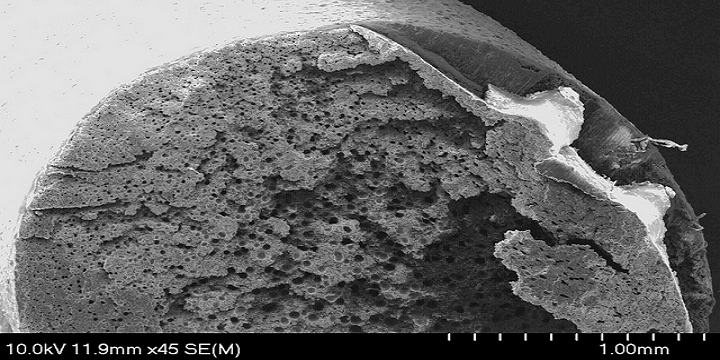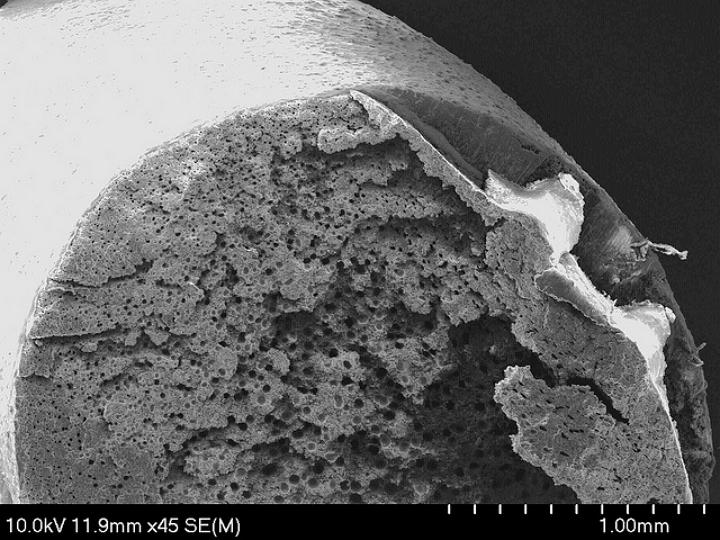Vic Harkness is a full-time student in Wales studying for a degree in AI and Robotics, and she also enjoys falconry, photography, and 3D printers. In fact, she sells a variety of 3D printed products through her Etsy store.
“I own two 3D printers which have taught me a lot about the implications of additive manufacturing as an emerging technology,” Harkness says. “From their use I have learned some basic CAD skills, as well as knowledge of materials and the stabilities of various structures.”
Harkness creates and prints custom 3D designs and offers a 3D printing as a service business, and she says that the experience has taught her the basics of running a business and helped her learned more about 3D printing by using her Lulzbot TAZ.
She says she recently had the opportunity to learn the use of a scanning electron microscope as part of her studies in the Biology Department of Aberystwyth University.
In case you’re not familiar with the technology, a scanning electron microscope produces images of a given sample by using a focused beam of electrons which interact with atoms in the sample to produce signals that can be detected and interpreted. The signals are used to determine the surface topography and composition of a substance, and an SEM can achieve resolution better than a single nanometer.
“I was invited to bring along some materials for scanning,” she says. “I was advised that biological matter would be a pain to prepare, so wouldn’t be ideal, so, I decided to bring along samples of different plastic filaments that I use for printing with my Lulzbot 3D printer. I spent some time being taught to use the machine, before my colleague and I were left to take our images.”
The results are very arty indeed and provide a fascinating look at the structure of various popular 3D printing filaments.
First up on the list, Harkness used a sample of Laywoo-D3, a filament used to create a wood-like effect in finished prints, and as it’s actually “wood based,” Harkness had some expectations about how it would look under the microscope.
“The material looks quite different to how I expected,” she says of her results. “I envisioned small pieces of wood fiber embedded in a plastic, but I suppose that this could cause issues with blockages in an extruder.”
Next up was Laybrick, a filament similar to Laywoo-D3 other than its reliance on mineral fibers in the place of wood fibers.
“The Laybrick again looks different to how I had expected (I expected a more crystalline structure),” Harkness says. “It is in fact quite similar looking to the Laywoo-D3 really. It is however a lot smoother and a lot more regular in [its] structure.”
But in terms of appearance, it was NinjaFlex which Harkness says gave her the most pleasure upon seeing the SEM images.
“This was my favorite material looked at,” she says. “In a lot of these images you can see where the material was ‘dragged’ inwards when it was cut. A crevice can also be seen from a failed attempt at cutting. The NinjaFlex seems quite fibrous, with numerous small strands coming away from it. The inside however seems to be a fairly solid material, lacking the holes seen in the Laywoo-D3 and Laybrick.”
Harkness also looked at a variety of other 3D printing materials, and you can see all of her images and review the full details of her investigation on her blog.
What do you think about these images of some popular 3D printing filaments by student and businesswoman Vic Harkness? Let us know in the 3D Printing Filaments Via Scanning Electron Microscope forum thread on 3DPB.com. Check out more of the images below.

